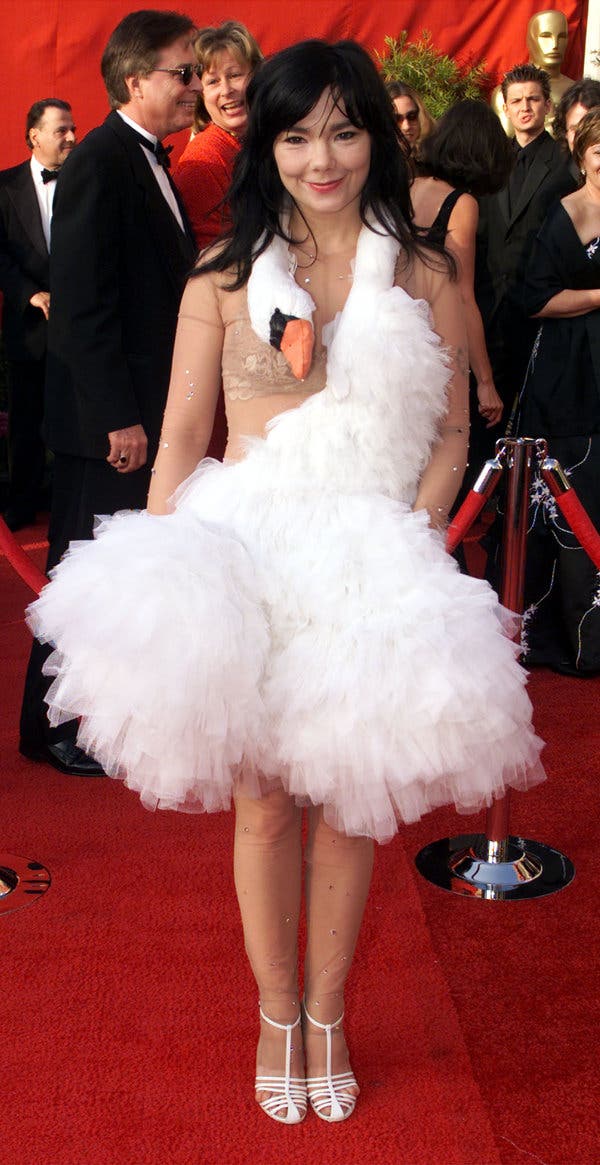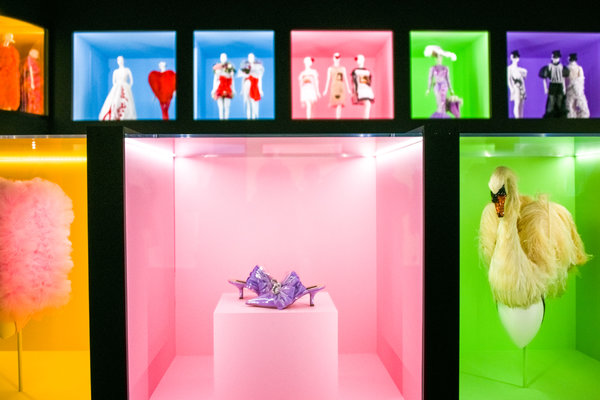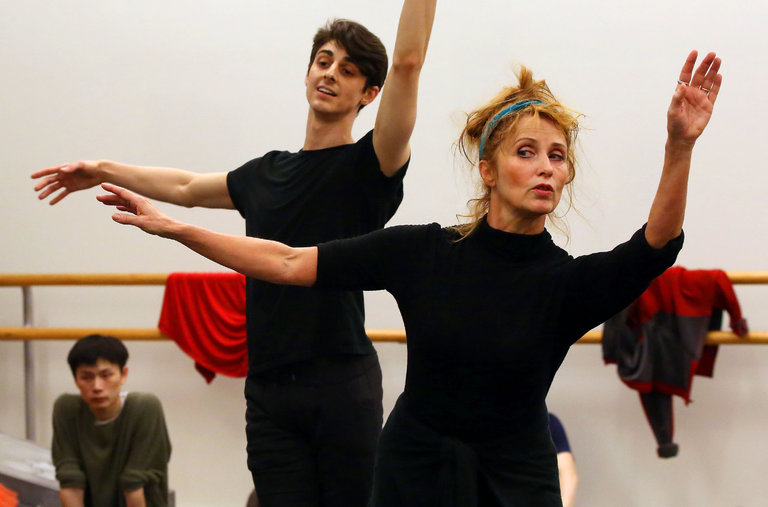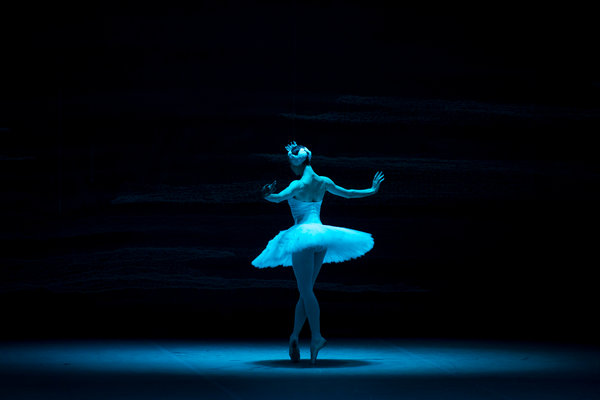Is it the moonbeams? The suicide-for-love finale? Or, perhaps, the extravagant gestures that designate women as birds? For Susan Sontag, writing in 1964 in “Notes on ‘Camp,’” the camp canon included Aubrey Beardsley drawings, Tiffany lamps, women’s clothes from the 1920s, Flash Gordon comics — and also “Swan Lake.”
“Camp: Notes on Fashion,” at the Metropolitan Museum of Art’s Costume Institute, uses Sontag’s essay to consider how clothes can turn into costume or performance. A surprising number of its sections refer to ballet through the ages, from its codification at the court of Versailles in the mid-17th century to Edgar Degas’s fin-de-siècle sketches of dancers.
Camp is a notoriously slippery term. But why do discussions about it so consistently evoke ballet as an example?
Ballet might have been considered camp from the start in its original French context. “Se camper” means adopting an exaggerated, stylized pose, which at one point could have described the entire form as a genre. Louis XIV, the dancing king, used his physique to assert power with spectacles like the “Royal Ballet of the Night,” which had 45 scenes and took about 13 hours to perform.
This attitude of extravagance is still alive in ballet’s cast of fantastical characters. Sontag observes that it is not an art form that “can easily do justice to the complexity of human nature.” The half-woman, half-spirit nymphs, wilis and sylphs are supposed to be instantly knowable archetypes rather than psychologically realistic.
At the Met, a display devoted to “Being-as-Playing-a-Role” highlights the stock personalities on the proscenium stage. “Swan Lake” appears as a theme itself, with dresses that nod to the ballet by Alexander McQueen for Givenchy and by Marjan Pejoski.
While Bjork might have mimed laying an egg on the red carpet in her Pejoski swan costume, ballet seems to be beside the point with these dresses. When contemporary fashion cites the art form, the statement is less about classical dance than it is about the perils of glamorous femininity. Moschino’s 1989 trompe l’oeil evening dress shows the lower half of a ballerina’s one-legged stance, suggestive of this precarious balancing act.

Bjork in her Marjan Pejoski swan dress at the 2001 Academy Awards.CreditAndrew Winning/Reuters
The Met show points out mainstream ideas about ballet that are nonetheless revealing of the expectations built up around it. George Balanchine said “ballet is Woman,” and the Belgian Symbolist poet Georges Rodenbach came up with expression “the eternal feminine” when observing female dancers in 1896.
If the camp object or person is always in quotation marks, as Sontag says, then ballet’s fairy-tale romances lend this treatment to gender. We do not see a woman in point shoes. We see a “woman,” just as the ornate Tiffany shade makes the lamp a “lamp.” (Tights and prince tunics can do the same thing for men.)
Christopher Isherwood was among the first writers to observe this citation effect. In his novel “The World in the Evening” (1954), he places Mae West drag on one end of the camp spectrum and classical dance on the other. “High Camp is the whole emotional basis of the ballet,” he writes. For Isherwood, the camp attitude takes serious subject matters — in ballet’s case, love — and expresses them, “in terms of fun and artifice and elegance.”
But styles, even in classical dance, change. When Isherwood used ballet to make his point in the 1950s, the art form’s athletic feats were padded with triumphant presentational flourishes, emphatic acting and pauses that demanded the audience’s applause. The old Russian touring companies had not quite died, with their “smell of the greasepaint, the ballerina in excelsis, the demented fans,” as Joan Acocella described in a 2005 The New Yorker article about the drag troupe Les Ballets Trockadero de Monte Carlo, who parody this mode.
Ballet’s marginal status in the cultural sphere only enhanced ballerinas’ rarefied, self-conscious celebrity and the cultishness of their followers. Peter Anastos, the founder of the Trockaderos, said in a phone interview: “You would never see one of these dancers in a store or in a restaurant. They were like silent-movie stars. And they would never really get into the role. It was always them doing the part.”
If there is a camp essence in this Romantic style of ballet, with its jeweled costumes and feathered headdresses, it is related to the worship of a style that is no longer of its time. In an art form that prides itself on tradition, passed down from one generation to the next, the steps and costumes remain basically unchanged even if the audience, and sometimes the dancers themselves, no longer know what it all means.
To embrace the art form’s classicism, especially as exhibited in 19th-century story ballets like “Le Corsaire” and “Don Quixote,” you have to put aside a sense of contemporary tastefulness. Their landscapes are so artificial, their plots so dreamlike, that they require a different kind of appreciation from the audience — “tender” is the word Sontag uses — than the latest in, say, conceptual art.
The set designer Jan Versweyveld, who created the displays for the Met exhibition, is famous for the functionality of his opera stages — even for works which can slip into camp, like “Salomé.” His strategy: Avoid the libretto’s historical references. “When people put a work back in time, it can become camp so easily,” he said. “We cannot read a dress in Louis XIV style. It’s totally out of our world.”
When many of the canonical classical ballets had their premieres, they were not expected to solemnly recapture a lost sublime. The French poet Théophile Gautier, the librettist responsible for “Giselle” (1841), “wrote about the ideal — and then women’s underskirts,” Felicia McCarren, a dance historian and professor of French at Tulane University, said in a phone interview. “It was all in the same grab bag of ideas.”
A certain irreverence toward ballet actually allowed it to be more accessible. “By restricting ballet to pure romance, the art form loses its power to make critical commentary on the state of things,” Ms. McCarren said.
The once-popular practice of ballet satire lives on with the Trockaderos. In the troupe’s version of “Swan Lake,” the lovers are always losing each other in plain sight on a bare stage. Odette shimmies in her prince’s face, and makes a big fuss about keeping his hands off her tutu.
The brilliance of the Trocks’s satire is nevertheless its closeness to the original form. The steps and story are recognizable from those in traditional productions. “When you think about ballet as an art form, it’s so artificial, codified and regimented,” Mr. Anastos said. “It becomes easy to dismantle it, because there are just so many moving parts.”
In an age when female dancers often cultivate an understated elegance, the Trocks’s over-the-top performances allow “Swan Lake” to indulge in its melodrama in a way that is otherwise no longer permissible. “People who are good at camp are absolute believers,” Mr. Anastos said. “They are real keepers of the flame.”
Still, the notion that ballet is camp — or that it contains elements of camp — is one that many balletomanes find offensive or silly. “The idea that ‘Swan Lake’ is camp is just ridiculous,” said Robert Gottlieb, the dance critic at The New York Observer and the former editor of The New Yorker. “Anyone who is familiar with the rigors ballet dancers go through cannot find it campy.”
George Dorris, the founding editor of Dance Chronicle, views it similarly. “Even if someone doesn’t identify with Giselle or Odette, I don’t think that turns them anywhere near camp,” he said in an email.
Then again, as both Sontag and Isherwood observed, as soon as a genre holds itself above camp, it risks becoming it. “The best camp is unintentional and innocent,” Mr. Versweyveld said. When it is intentional, “that is not camp — or it is low camp.”
Every time ballet fails in its seriousness, we are reminded of just how hard it is to pull off. In the mid-20th century, ballet would be reimagined in a sleek, plotless Neo-Classicism that made the go-for-broke enchantments of the old librettos all the more difficult to believe in. But sometimes in those Romantic ballets, the movement and emotion fuse, making the illusion seem so real that whatever might be camp about it vanishes.










